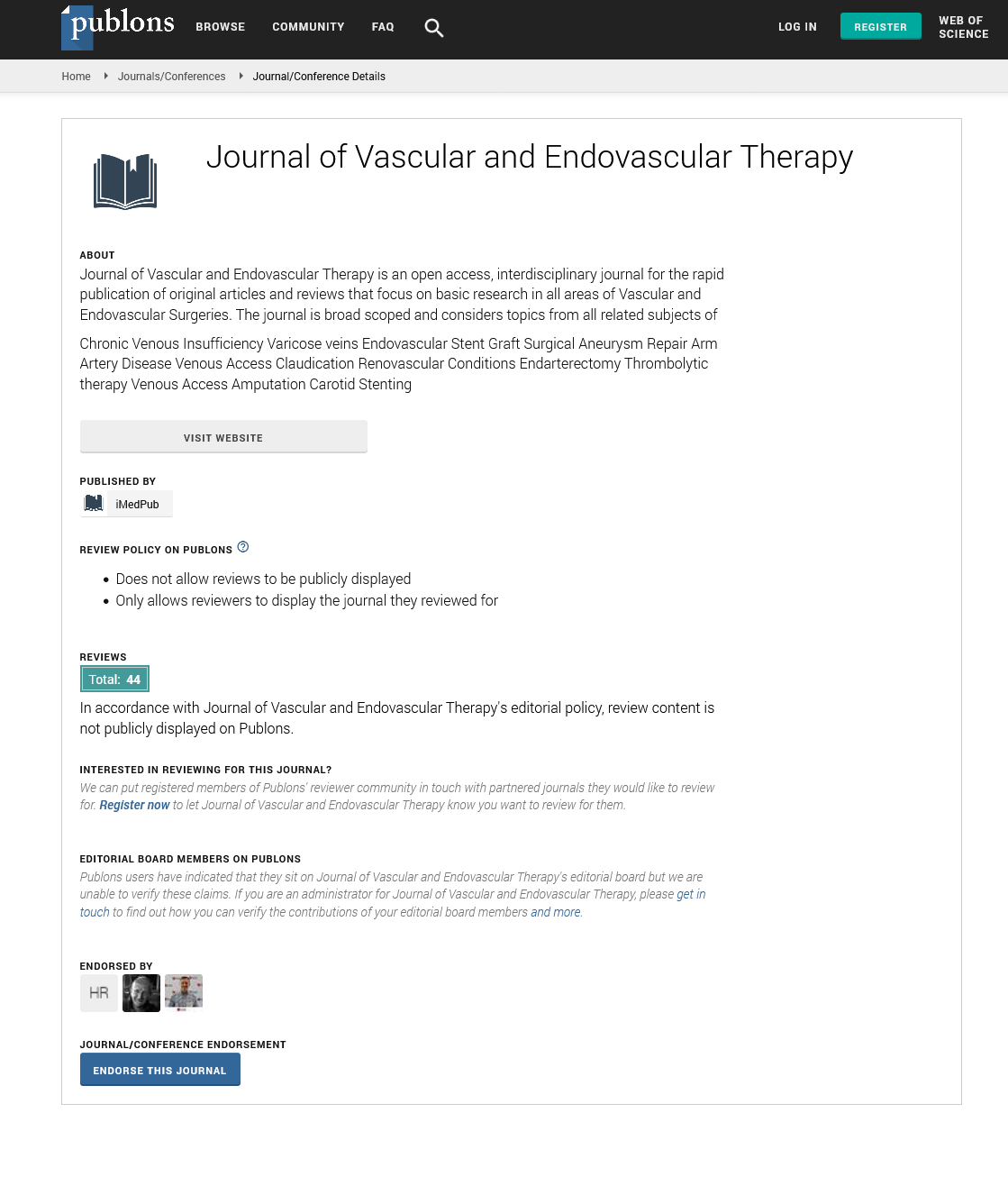ISSN : 2634-7156
Journal of Vascular and Endovascular Therapy
An easy algorithm to approach and treat vascular anomalies, experience in the Vascular Surgery Department of National Western Medical Center Pediatrics Hospital
4th Edition of World Congress & Exhibition on Vascular Surgery
March 28-29, 2019 Rome, Italy
Alejandro Celis
IMSS CMNO HPED, Mexico
ScientificTracks Abstracts: J Vasc Endovasc Therapy
DOI: 10.21767/2573-4482-C1-005
Abstract
Statement of the Problem: Vascular anomalies are a group of diseases that has been avoided by most of physicians of any specialty. They have been considered for many years as untreatable, and there are very few specialized centers in the world that take care of these patients. As a vascular surgeon we have been taught that these diseases are untreatable or that they can be your worst nightmare. The ISSVA has been the leading association classifying these diseases and having a biannual meeting to discuss and show advances in the field. Though, there are few members around the world, and data has not been rightly spread through involved physicians.
Methodology & Theoretical Orientation: More than 100 patients have been treated in our Center by the Vascular Surgery Department with different vascular anomalies. Reviewing the results of the treated patients an algorithm has been developed to have an easy approach and treatment decision for most cases.
Findings: An easy algorithm simplifies the way first contact doctors should approach a vascular anomaly. Most important concerns are to try to classify the anomaly according to ISSVA and detecting potentially complications on time. A good physical examination, basic laboratory tests, and Doppler Duplex Ultrasound are the basis to try to approach any vascular anomaly. Most complex cases will need a referral to specialist, and this specialist can use this algorithm to simplify the treatment decision.
Conclusion & Significance: With the spread of an easy algorithm to approach and treat vascular anomalies, patients will benefit with a prompt diagnosis and start of treatment, which will decrease the risk of complications. This simple algorithm can be used by any physician or medical center and will also have a great cost/benefit in institutions, or private practice.
Recent Publications
1. Cox J A, Bartlett E and Lee E I (2014) Vascular malformations: a review. Seminars in Plastic Surgery 28(2):58–63.
2. McCafferty I J et al. (2011) Imaging and management of vascular malformations.Clinical Radiology 66(12):1208–1218.
3. Hammill Adrienne et al. (2011) Sirolimus for the treatment of complicated vascular anomalies in children. Pediatric Blood & Cancer 57(6):1018- 1024.
4. Adams Denise M et al. (2016) Efficacy and safety of sirolimus in the treatment of complicated vascular anomalies. Pediatrics 137(2):e20153257.
5. Richter Gresham T and Friedman Adva B (2012) Hemangiomas and vascular malformatios: current theory and management. International Journal of Pediatrics. Article ID: 645678.
Biography
Alejandro Celis is a Vascular Surgeon, trained in Guadalajara, Mexico, since 2017, he has become the first Vascular Surgeon directly involved in the management of children in a Pediatrics Hospital. He has been applying his clinical, surgical and endovascular skills to treat mostly patients with vascular anomalies. Noticing there is very little experience about vascular anomalies among most physicians, he has decided to get deep in the field and develop the best strategies to treat the patients and share his experience with other physicians.
E-mail: acelis@angiologia.mx
Google Scholar citation report
Citations : 177
Journal of Vascular and Endovascular Therapy received 177 citations as per Google Scholar report
Journal of Vascular and Endovascular Therapy peer review process verified at publons
Abstracted/Indexed in
- Google Scholar
- Open J Gate
- Publons
- Geneva Foundation for Medical Education and Research
- Secret Search Engine Labs
Open Access Journals
- Aquaculture & Veterinary Science
- Chemistry & Chemical Sciences
- Clinical Sciences
- Engineering
- General Science
- Genetics & Molecular Biology
- Health Care & Nursing
- Immunology & Microbiology
- Materials Science
- Mathematics & Physics
- Medical Sciences
- Neurology & Psychiatry
- Oncology & Cancer Science
- Pharmaceutical Sciences
